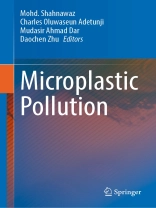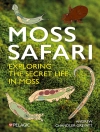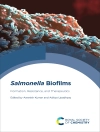This edited volume covers cutting-edge research on different facets of microplastic pollution at the global level. The book describes different types of microplastics, their sources, transportation, extraction, identification, deleterious effects (on flora and fauna) and various mitigation measures.
This book discusses recent advances in microplastic pollution and suggests future research directions to mitigate microplastic at the global level. It constitutes six important sections to report different facets of microplastic pollution. Section 1 deals with microplastic types, sources, uses and transport from land to aquatic environment; Section 2 reports detection, collections, extraction and identification of different types of microplastic from various polluting sites; Section 3 suggests cleaning drives for the removal of microplastic from the polluting sites; Section 4 highlights the impact of microplastic waste on flora and fauna in both terrestrial and aquatic environments; Section 5 enlists various microplastic degradation approaches to mitigate microplastic; and Section 6 discusses recent regulations/policies to minimize microplastic generation, followed by future research directions to mitigate microplastic pollution at global level.
This book is of interest and useful to professionals working on microplastic mitigation, environment protection and waste management, NGOs and policymakers.
Spis treści
Part 1. General Overview of Types, Source, Application and transportation of Microplastic from land to marine.- 1. General Introduction of microplastic: uses, Types and generation.- 2. Primary microplastic: source, uses, transportation from land to marine environment.- 3. Sources, uses and transport of secondary microplastic from land to marine environment.- 4. Usage of microplastic beads in pharmaceuticals and cosmetics industry: a review.- 5. Application of microplastic in toiletry products.- Part 2. Different Key sources of microplastic pollution.- 6. Waste water treatment plants as hotspots of microplastic pollution.- 7. Microplastics originating from paints and synthetic textile materials.- 8. Fishing gears and nets as a source of microplastic.- 9. Tyres, bitumen wear and plastic bottles, other single used plastic as major source of microplastic.- Part 3. Reports on Collection, Identification, Estimation and Removal of microplastics from the contaminated.- 10. Reports on collection, identification and estimation of microplastic in the freshwater bodies.- 11. Detection, collection, identification and estimation of microplastic from the marine environment: An overview.- 12. Detection of microplastic in waste water treatment plants.- 13. Report of microplastic presence in drinking water.- 14. Detection of microplastic in sea food.-15. Reports of microplastic in human blood.- 16. Removal of microplastic from the waste water treatment plants.- Part 4. Entry of microplastic in the food chain and its toxicity and impact on terrestrial flora and fauna.- 17. Entry of the microplastic in the food chain and food web.- 18. Insect interactions with microplastics under different ecosystem.- 19. Microplastic as a pathogenic vector to cause diseases in marine biota.- 20. Microplastic to accumulate microbial pathogens in the terrestrial environment.- 21. Impact ofmicroplastic on physiology of benthos.- 22. Microplastics and Microorganisms – A Evolutionary Symbiosis in Terrestrial Environment.- 23. Insights of the toxic impact of microplastic on the flora.- 24. Toxicity of microplastic on the flora and fauna of the freshwater ecosystem: An overview.- 25. Photocatalytic degradation of microplastic in the environment.- Part 5. Microbial approaches to degrade microplastic pollution.- 26. Biodegradation of microplastic using bacterial cultures.- 27. Myco- degradation of microplastic.- 28. Reports of Actinomycetes to degrade microplastic.- 29. Algal-based degradation of microplastic: Prospects for Combating Microplastic Pollution.- 30. Recent trends to address the microplastic waste at global level.
O autorze
Dr. Mohd. Shahnawaz is currently working as an assistant professor on contract basis at Department of Botany, University of Ladakh, Kargil Campus, Khumbathang, Ladakh, India. In 2021, he was selected as an associate professor under invited talent programme at Biofuel Institute, School of the Environment and Safety Engineering, Jiangsu University, Zhenjiang, China. In the year, he was selected as a postdoc fellow at Yeungnam University, South Korea. Dr. Shahnawaz got selected for National Postdoctoral Fellowship in 2017, funded by DST-SERB, Govt. of India. He has several years of teaching and postdoctoral research experience. Dr. Shahnawaz worked on bioremediation of polythene at the Botany Department, SP Pune University, during his doctoral research with Prof. A. B. Ade. He is recipient of various fellowships awarded by the SPPU, UGC-BSR, UGC-MANF and DST-SERB. His research interest is in ecology, microbiology, bioremediation, plant biotechnology, integrative medicine and biofuels. Currently, he is focused on the mitigation of microplastic using bioremediation technology. He has served as a reviewer and editor for several international journals and had received the Young Scientist Award (2019) from VDGood Professional Association at Vishakhapatnam, India. He has published 23 research articles, 15 book chapters and 9 books of international repute.
Prof. Charles Oluwaseun Adetunji is presently a faculty member at the Microbiology Department, Faculty of Science, Edo State University Uzairue, Edo State, Nigeria. He is currently the Director of Research and Innovation at EDSU. He is a fellow of the Royal Society of Biology; UK; fellow of Biotechnology Society of Nigeria; and fellow of Nigerian Young Academy. He is a visiting professor and the executive director for the Center of Biotechnology, Precious Cornerstone University, Ibadan. He is an affiliate member of the African Academy of Science. He has won several scientific awards and grants from renowned academic bodies. He was recently listed in Stanford University’s World Top 2% Scientists Rankings for 2023. He has published many scientific journals and conference proceedings in refereed national and international journals with over 580 manuscripts, including over 40 books and many scientific patents with Google Scholar i10-Index 136. He was ranked recently as number 1st among the top 500 prolific authors in Nigeria from 2020 to till date by Sci Val/SCOPUS, and recently, he was ranked number 1 in two different fields from biological sciences and agricultural science among 500 prolific authors from 58 different countries in Africa
Dr. Mudasir A. Dar is one of the young scientists in the field of environmental science and microbial-technology. His research interest includes a wide range of resource recovery, microbial technology, and bioengineering fields. His research experience includes gut-microbiome analysis in insects, snails, and termites with an expertise on metagenomics and transcriptomics. Currently, he is working as an associate professor at Jiangsu University, China. He has received funding from many international agencies such as NFSC, Mo ST-China, and China Postdoctoral Organization. He has published over 45 papers in peer-reviewed international journals. He is serving as active editorial board member of many reputed journals, such as
BMC Microbiology (Springer Nature) and
Engineering Microbiology (Elsevier). He is an active regular reviewer of many journals published by Elsevier, Wiley, Springer, RSC, and Taylor & Francis. He has many awards to his credit such as CSIR-UGC-NET, Maulana Azad National fellow, UGC-UPE II fellow, etc.
Prof. Daochen Zhu is currently working as a professor at Biofuel Institute, School of the Environment and Safety Engineering, Jiangsu University, Zhenjiang, China. Previously, he had served as an associate professor and assistant professor at the same university. He has earned his Ph D in Environmental Biochemistry from Kobe University, Japan (2008). He has completed his BS in Fermentation Engineering from Dalian Polytechnic University, China (2004). During the tenure of his career, he also worked at Washington State University, USA, as a visiting scholar (2015–2016). He is a recipient of numerous awards and funding, which support his research at Jiangsu University, China. Dr. Zhu is a recognized guide for MS students. He is a reviewer and editorial board member of various peer-reviewed journals of international repute. His research group mainly focuses on microorganism resource and diversity, lignin biodegradation and chemicals product, and biodegradation of organic pollutants. He is also interested in the mitigation of microplastic through bioremediation technology. Dr. Zhu has 50 peer-reviewed publications, 12 patents, and 4 book chapters and 3 edited books to his credit with international repute.











